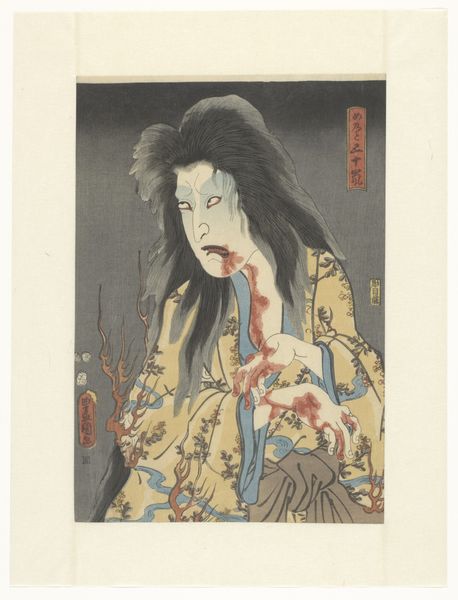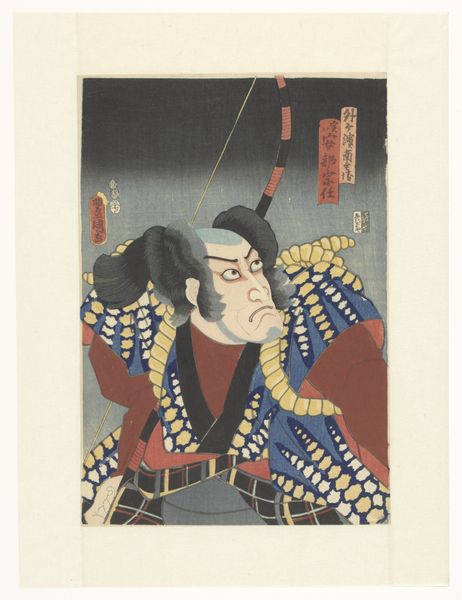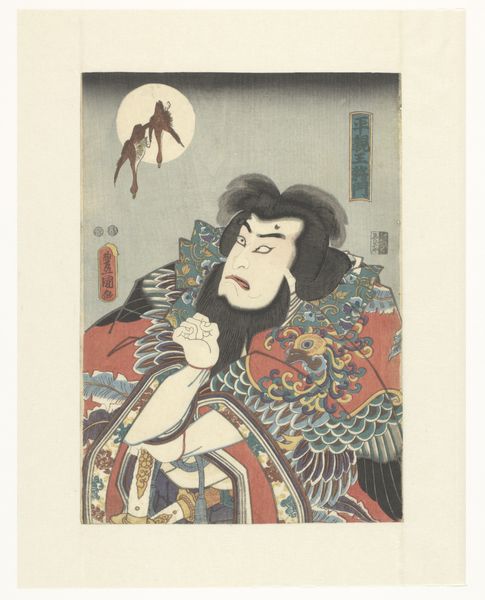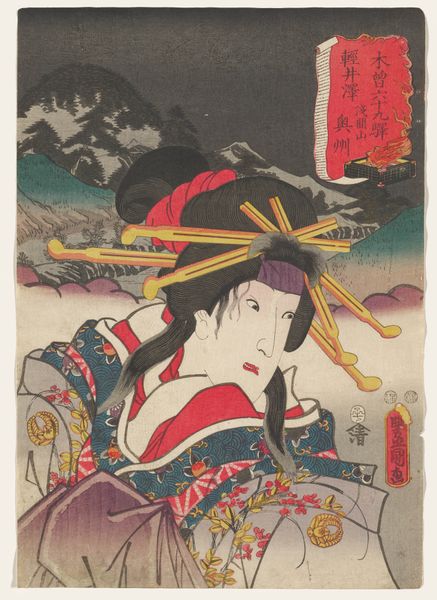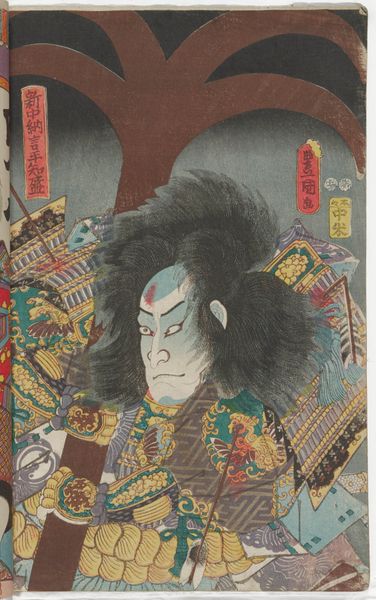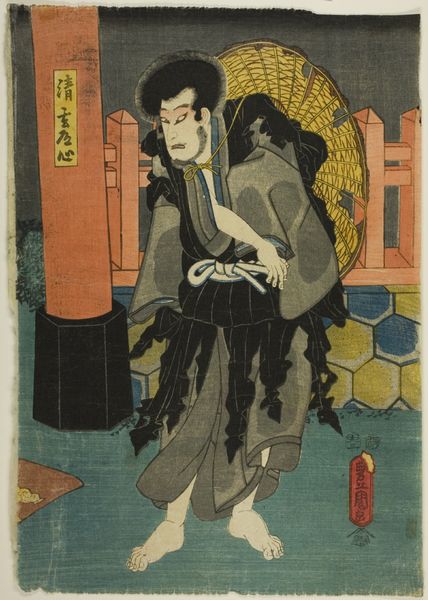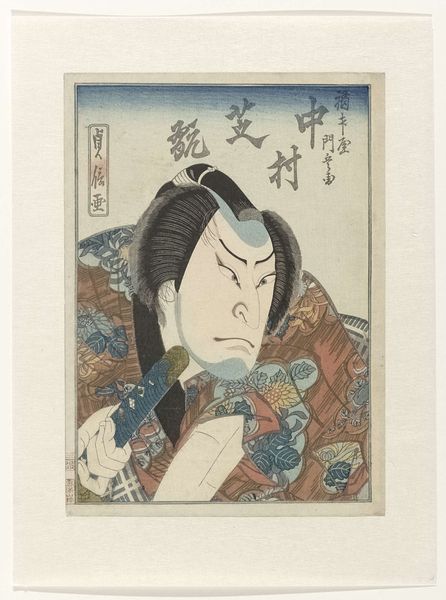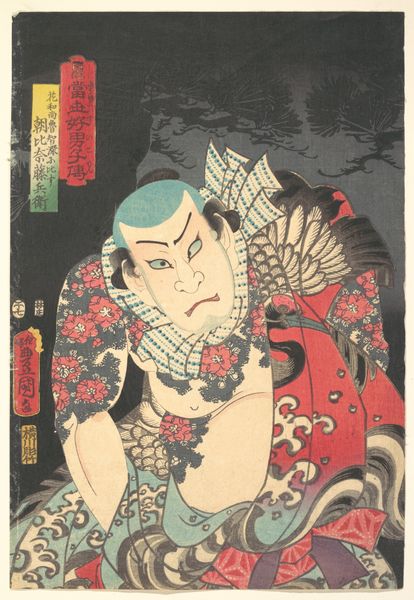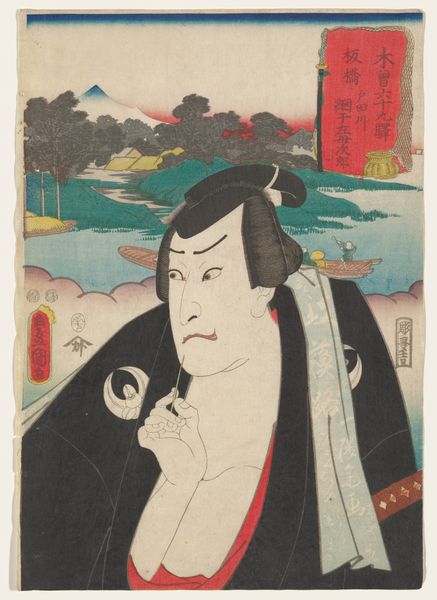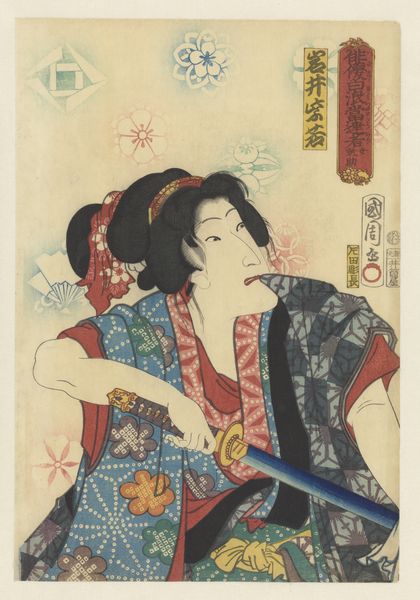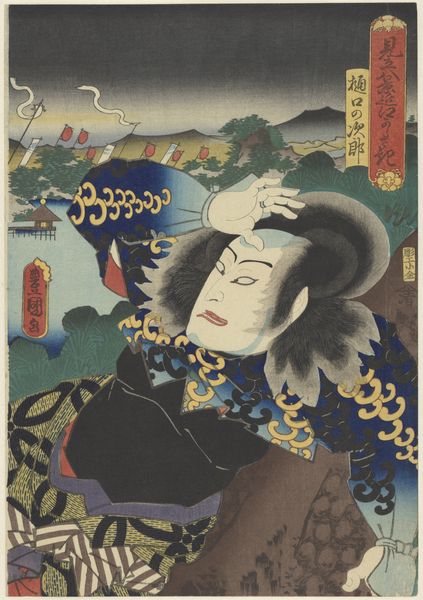![['Shirai Gonpachi committing suicide', 'Hirai Gonpachi, the Rokugô ferry between Shinagawa and Kawasaki', '53 stations of the Tokaido'] by Utagawa Kunisada](/_next/image?url=https%3A%2F%2Fd2w8kbdekdi1gv.cloudfront.net%2FeyJidWNrZXQiOiAiYXJ0ZXJhLWltYWdlcy1idWNrZXQiLCAia2V5IjogImFydHdvcmtzLzNjMWY3OTU3LTJlZmEtNDJhZC1iMTA1LTBkYTdjOWEyYzA5Mi8zYzFmNzk1Ny0yZWZhLTQyYWQtYjEwNS0wZGE3YzlhMmMwOTJfZnVsbC5qcGciLCAiZWRpdHMiOiB7InJlc2l6ZSI6IHsid2lkdGgiOiAxOTIwLCAiaGVpZ2h0IjogMTkyMCwgImZpdCI6ICJpbnNpZGUifX19&w=3840&q=75)
['Shirai Gonpachi committing suicide', 'Hirai Gonpachi, the Rokugô ferry between Shinagawa and Kawasaki', '53 stations of the Tokaido'] 1852 - 1859
0:00
0:00
utagawakunisada
Rijksmuseum
print, woodblock-print
#
narrative-art
# print
#
asian-art
#
landscape
#
ukiyo-e
#
figuration
#
woodblock-print
Dimensions: height 350 mm, width 245 mm
Copyright: Rijks Museum: Open Domain
Curator: What strikes you first about this print? It's a woodblock, dating roughly between 1852 and 1859, attributed to Utagawa Kunisada, and it is entitled, "Shirai Gonpachi committing suicide", "Hirai Gonpachi, the Rokugo ferry between Shinagawa and Kawasaki" from the series "53 stations of the Tokaido." Editor: The overwhelming sense of tragedy! Even with the landscape background, my eye is drawn to the figure and that dramatic moment of self-inflicted violence. The bright blood, the anguished face… it's quite visceral. Curator: Ukiyo-e prints were often tied to popular narratives, especially kabuki theater. This image references the tale of Shirai Gonpachi, a tragic figure whose story resonated deeply with the public. The inclusion in the "53 Stations of the Tokaido" series attempts to imbue it with an established social context of pilgrimage and commerce. Editor: The cherry blossom motif in the blood, though... Is that intended to lessen the brutality, to beautify it somehow? I wonder about the cultural significance there. It can't simply be decorative. Curator: Good eye! The cherry blossom is, of course, deeply symbolic in Japanese culture – representing the fleeting nature of life, beauty, and ultimately, mortality. Its presence underscores the tragic irony here. Gonpachi's life, cut short, is being likened to the ephemeral beauty of the blossoms. This narrative served to uphold societal expectations about honor. Editor: A way of framing suicide, perhaps, to make it more palatable? Certainly not glorifying, but… explaining? The image allows for a dialogue with these ideals. Also, notice how Mount Fuji is positioned in the background – is that adding a layer of serene acceptance or national pride, or maybe both? Curator: Precisely. Remember that prints like these served as both entertainment and a means of conveying cultural values, or at the very least, commenting on their endurance and relevance in the modern moment. The popularity of Gonpachi's story reflects societal fascination with, and perhaps even anxieties surrounding, honor, duty, and the samurai code in a rapidly changing Japan. Editor: It’s truly remarkable how a single image can carry such a weight of cultural significance. Considering how the imagery can affect our own understanding makes this artwork very intriguing. Curator: I agree. This print shows how art engages in shaping our perceptions of the past and social norms.
Comments
No comments
Be the first to comment and join the conversation on the ultimate creative platform.
